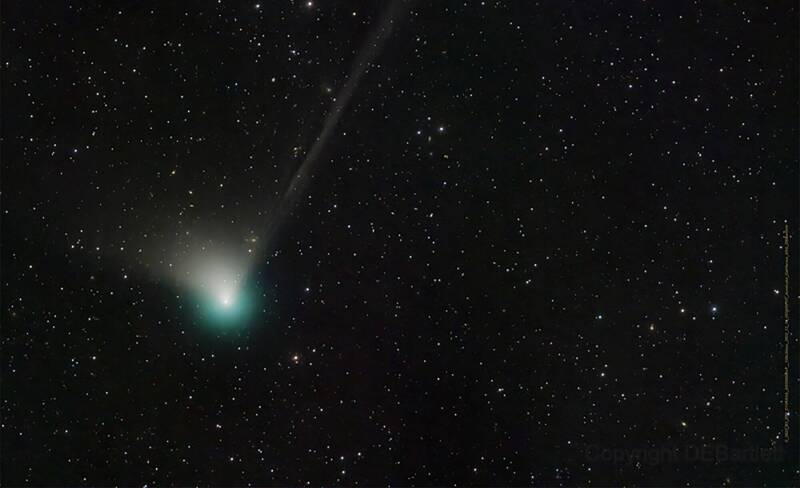C/2022 E3 (ZTF) will be closest to the Earth on February 1, when its apparent magnitude is estimated to be around 5.4, and it may be seen with the naked eye without being affected by light pollution or moonlight.
(AFP)
[Instant News/Comprehensive Report] The last time I visited the earth was 50,000 years ago!
The comet C/2022 E3 (ZTF), which was only discovered last year, reached its perihelion on the 12th, and will be closest to the earth on February 1st. At that time, the apparent magnitude is estimated to be around 5.4, and there is a chance to see it with the naked eye without being affected by light pollution or moonlight. , the public can now use medium-sized telescopes in the northeast-to-northeast sky in the constellation Corona Borealis before 4 a.m. to find traces of what may become the brightest comet of the year.
According to comprehensive media reports, when C/2022 E3 passed Jupiter last March, it was discovered by astronomers using the "Zwicky Transient Facility". Its last visit to the earth was in the Paleolithic Age 50,000 years ago. Experts calculated that the orbital eccentricity of C/2022 E3 is 1.00027. In other words, it is a parabolic orbit. After it circles the sun once, it may be thrown out, leave the solar system permanently, and never return.
Please read on...
C/2022 E3 passed perihelion on the 12th, and the current apparent magnitude is 9.11. As it gets closer to the earth, the apparent magnitude is estimated to be around 5.4 when it is closest to the earth on February 1st. There is a chance to see it with the naked eye, but 2 January 1 is a full moon, which may affect observations. People in the northern hemisphere are the best time to observe in the last week of January.
According to the astronomical forecast of "Internet Planetarium", the best viewing time is between the northeast and the northeast sky before the astronomical dawn (about 4:00 a.m.), especially when it is not affected by the moonlight. It is about 3:00 a.m. on January 30. Time, January 31st is 12:00 midnight, and the brightest day on February 1st is about 23:00, and then the suitable viewing time will get earlier and earlier and gradually become darker as it moves away from the earth.
